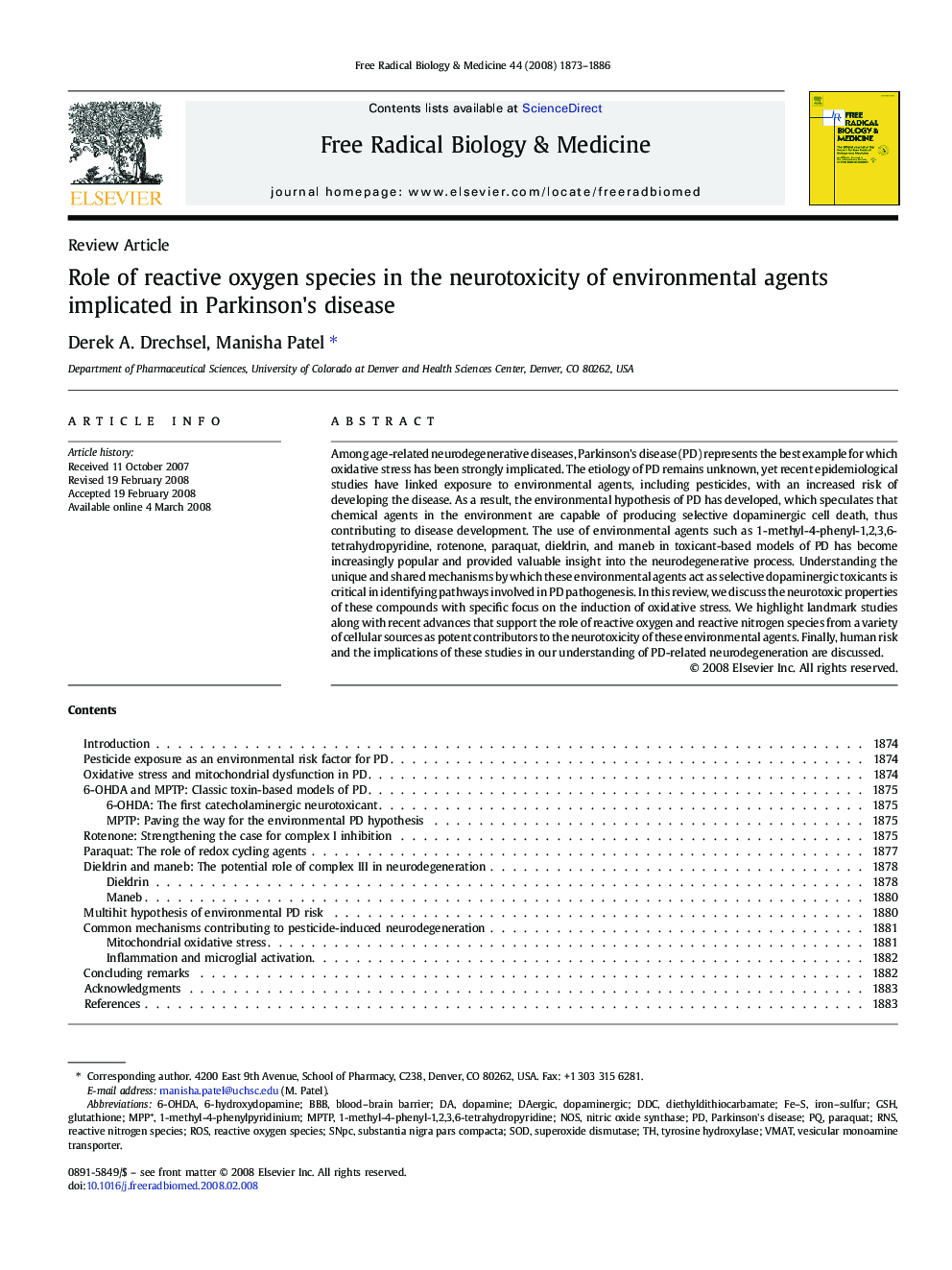| Article ID | Journal | Published Year | Pages | File Type |
|---|---|---|---|---|
| 1910722 | Free Radical Biology and Medicine | 2008 | 14 Pages |
Among age-related neurodegenerative diseases, Parkinson's disease (PD) represents the best example for which oxidative stress has been strongly implicated. The etiology of PD remains unknown, yet recent epidemiological studies have linked exposure to environmental agents, including pesticides, with an increased risk of developing the disease. As a result, the environmental hypothesis of PD has developed, which speculates that chemical agents in the environment are capable of producing selective dopaminergic cell death, thus contributing to disease development. The use of environmental agents such as 1-methyl-4-phenyl-1,2,3,6-tetrahydropyridine, rotenone, paraquat, dieldrin, and maneb in toxicant-based models of PD has become increasingly popular and provided valuable insight into the neurodegenerative process. Understanding the unique and shared mechanisms by which these environmental agents act as selective dopaminergic toxicants is critical in identifying pathways involved in PD pathogenesis. In this review, we discuss the neurotoxic properties of these compounds with specific focus on the induction of oxidative stress. We highlight landmark studies along with recent advances that support the role of reactive oxygen and reactive nitrogen species from a variety of cellular sources as potent contributors to the neurotoxicity of these environmental agents. Finally, human risk and the implications of these studies in our understanding of PD-related neurodegeneration are discussed.
